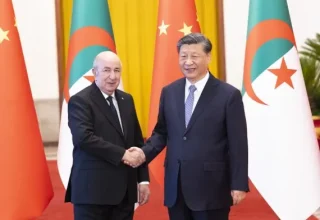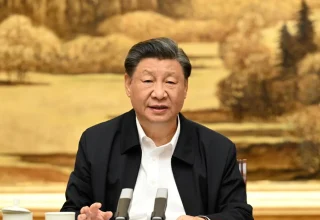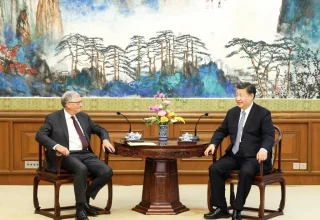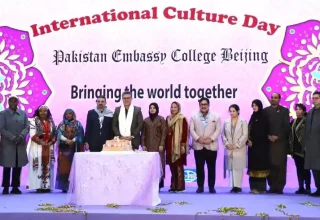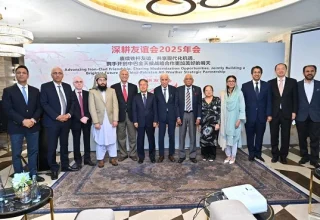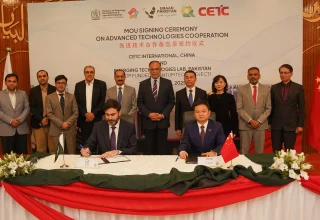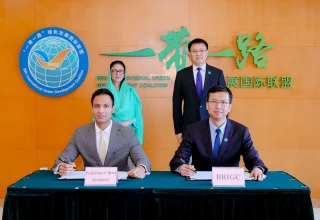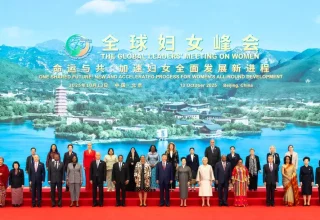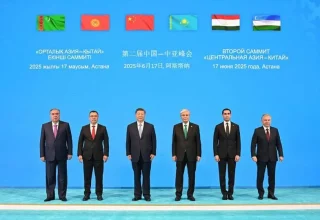
In a world increasingly shaped by fragmentation, shifting alliances and global uncertainty, the 2nd China – Central Asia Summit has emerged as a landmark event not just for the countries directly involved but for the broader vision of international cooperation based on mutual respect and shared prosperity. As geopolitical fault lines continue to widen across continents, the enduring strength of the China – Central Asia partnership stands as a beacon of regional stability, economic interdependence and a commitment to long-term peace.
Held at a critical juncture in global affairs, the summit solidified a new diplomatic architecture that is both inclusive and forward-looking. Anchored in millennia of ancient silk road exchanges and fortified by over three decades of contemporary engagement, the China – Central Asia relationship has matured into a modern model of South–South cooperation. It is a partnership driven not by coercion or ideology but by shared interests, complementary strengths and an unwavering belief in mutual development.
One of the most compelling outcomes of this deepening partnership is the extraordinary growth in trade and economic cooperation. From 2013 to 2024, China’s trade with the five Central Asian nations Kazakhstan, Kyrgyzstan, Tajikistan, Turkmenistan and Uzbekistan expanded by an astonishing 116 percent, rising from 312.04 billion yuan to 674.15 billion yuan. Even more remarkable is that this trade grew at an average annual rate of 7.3 percent surpassing the pace of China’s overall trade growth by 2.3 percentage points.
This isn’t just data, it’s the foundation of a future built on practical collaboration. In the first five months of 2025 alone, bilateral trade reached 286.42 billion yuan up 10.4 percent year-on-year setting a new record for the period. These figures underscore a trend that is not temporary but structural. With enhanced transport infrastructure and cross-border facilitation, economic linkages between China and Central Asia are evolving from transactional exchanges to strategic value chains.
Among the sectors seeing remarkable transformation is agriculture. As China continues to prioritize food security and green development it is opening wider doors to high-quality eco-friendly agricultural imports from Central Asia. From January to May 2025, China imported agricultural products worth 4.36 billion yuan from the five Central Asian countries marking a robust 26.9 percent increase.
What stands out is the exponential growth in specific categories that is imports of linseed from Kazakhstan jumped by over 202 percent, raisins from Uzbekistan surged 153.7 percent and honey from Kyrgyzstan saw a 10.9-fold increase. This reflects not only rising demand but the increasing competitiveness and quality of Central Asian produce. In turn, these exports provide crucial income and employment opportunities for farmers and rural communities across the region, a win-win scenario with wide-reaching social impact.
Another key pillar of the summit’s long-term significance lies in the physical and digital connectivity that is rapidly taking shape. Improved land transportation networks have become the arteries of commerce and cooperation. In 2024, road transport accounted for 51.8 percent of China’s trade with Central Asia, a dramatic leap from just 19.9 percent in 2020. This shows that strategic investments in highways, logistics parks and cross-border customs coordination are paying real dividends.
The Belt and Road Initiative (BRI) which features prominently in China–Central Asia cooperation is now entering a new stage of high-quality development. Rather than emphasizing volume, the focus is increasingly on resilience, sustainability and smart infrastructure. As such, Central Asia is not merely a corridor but a partner in co-creating an interlinked innovation-driven regional economy.
What sets the China – Central Asia relationship apart is its philosophical foundation. Unlike many contemporary alliances that rest on military or ideological alignment, this partnership is grounded in mutual respect, non-interference and practical cooperation. It respects each nation’s sovereignty while encouraging collaboration in fields as diverse as education, clean energy, digital economy and healthcare.
The 2nd Summit reaffirmed these principles while outlining a concrete roadmap for future engagement. New frameworks for cultural exchange, talent development and technological innovation were introduced further humanizing a relationship that is often seen through a purely economic lens.
China’s approach to Central Asia is also a blueprint for the future of multilateral diplomacy. It proves that smaller and landlocked countries need not be left behind in the global race for development. With vision, partnership and infrastructure even the most remote regions can become engines of growth and hubs of cooperation.
Looking ahead, the future of China – Central Asia cooperation is not only promising, it is transformational. As global supply chains diversify, as energy transition accelerates and as nations seek more balanced geopolitical engagements, this partnership is well positioned to lead by example. The trust built over decades, the complementarity of economies and the people-to-people ties forged through history all point toward a golden era of collaboration.
The 2nd China – Central Asia Summit will be remembered not as a ceremonial gathering but as a pivotal turning point, one that redefined the contours of regional integration and laid down the stepping stones for a peaceful and prosperous Eurasia.
In an age where discord often dominates headlines, this summit sent a different message, that cooperation is not only possible, it is essential and it is already happening. The China – Central Asia relationship is not merely surviving in a turbulent world, it is thriving and it offers hope for what international relations can aspire to be.


